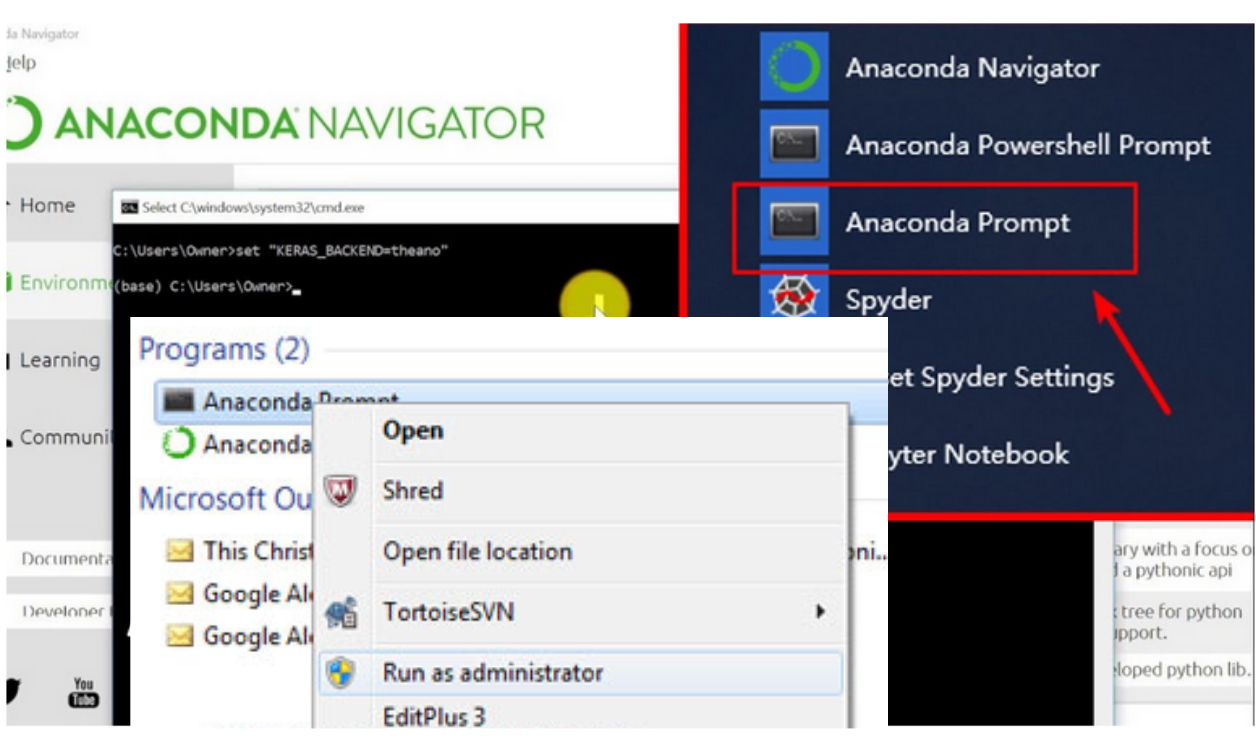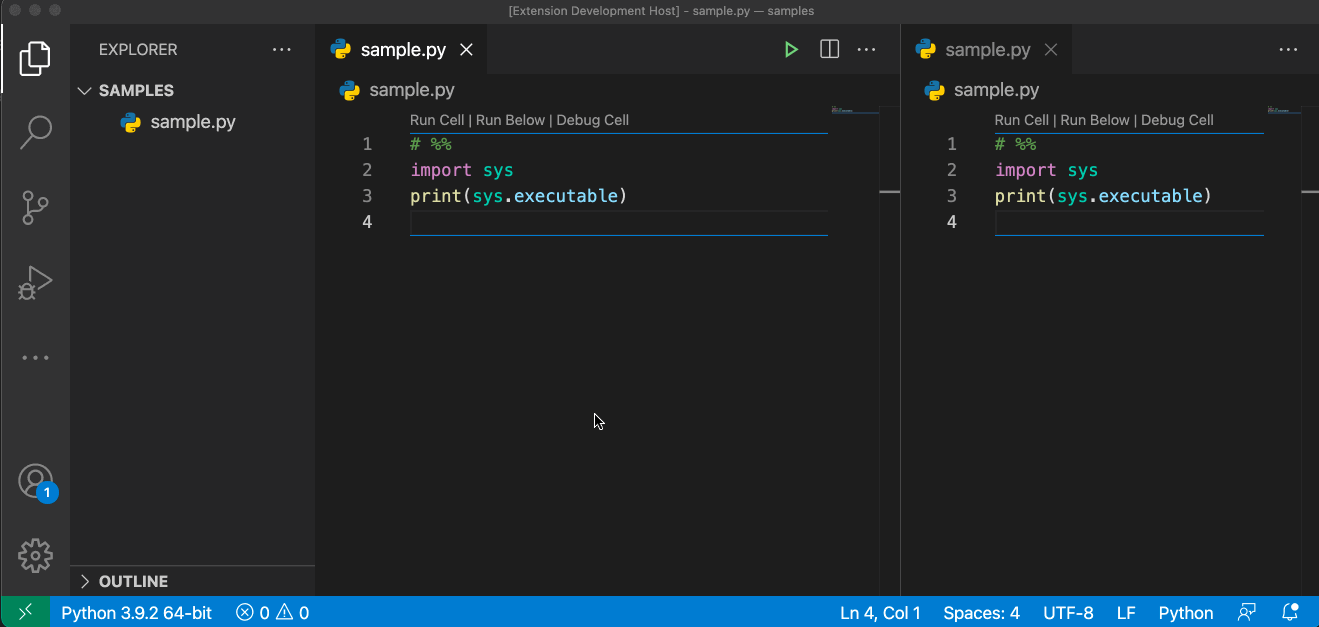We support Python 3.10 or 3.11, and recommend VSCode IDE. If you do not have Python installed, you can download Anaconda.
Upon Python installation, open Anaconda Prompt as Administrator and install the latest gdsfactory (from the conda-forge channel) and Optional cad visualization extras using pip.

conda install -c conda-forge gdsfactory -y
pip install "gdsfactory[cad]"--upgradeUpdate gdsfactory¶
You can upgrade gdsfactory using the following command:
pip install gdsfactory[cad] --upgradePlease note that some PDKs may only work for a specific version of gdsfactory. Ensure you install the correct gdsfactory version specified in the pyproject.toml file. This will automatically happen when you install gdsfactory as one of the PDK dependencies. For example, pip install gf180 will install the latest gdsfactory version tested for the GlobalFoundries180 PDK.
To determine your current gdsfactory version, use the following code:
import gdsfactory as gf
gf.config.print_version_plugins()Docker container¶
As an alternative, you can use the pre-built Docker image from hub
docker build -t joamatab/gdsfactory .For instance, VS Code supports development inside a container. See Developing inside a Container for details.
Installation for developers¶
As a contributor, if you are on windows you need to download Git and optionally GitHub Desktop.
Then you need to fork the GitHub repository, git clone it (download it), git add, git commit, git push your improvement. Then pull request your changes to the main branch from the GitHub website.
The following lines will:
- clone your gdsfactory fork (make sure you change
YourUserNamewith your GitHub user name) - download the GDS golden data for running GDS regressions from a separate repo
- install gdsfactory locally on your computer in
-eedit mode. - install pre-commit hooks for making sure your code syntax and style matches some basic rules.
git clone git@github.com:YourUserName/gdsfactory.git
cd gdsfactory
git clone https://github.com/gdsfactory/gdsfactory-test-data.git -b test-data test-data
conda install -c conda-forge gdstk -y
pip install -e .[cad,dev]
pre-commit installStyle¶
- Follow Google Python Style Guide and existing code.
- Make sure tests pass on GitHub.
- Install pre-commit to get the pre-commit checks passing (autoformat the code, run linter ...).
Pre-commit makes sure your code is formatted following black and checks syntax.
If you forgot to pre-commit install you can fix pre-commit issues by running
pre-commit run --all-filesuntil you fix all the issues that the pre-commit check complaints about.
Tests¶
gdsfactory tests are written with pytest. You can run them, from the root of the repository with pytest:
pytest -spytest will test any function that starts with test_. You can assert the number of polygons, the name, the length of a route or whatever you want.
In addition to unit tests run against the library, gdsfactory has a suite of regression tests which ensure that Components are never unintentionally modified between revisions. These regression tests include
| Test Type | Path | Format | Purpose |
|---|---|---|---|
| GDS | tests/components/test_components.py:test_gds | GDS | Tests that GDS files have not changed either structurally (cell names and hierarchy) or geometrically (XOR). |
| Settings | tests/components/test_components.py:test_settings | YAML | Tests that component settings have not changed. |
| Netlist | tests/test_netlists.py | YAML | Tests that extracted netlist yaml contents have not changed. |
| Ports | tests/components/test_ports.py | CSV | Tests that port locations have not changed |
| Containers | tests/test_containers.py | YAML | Tests that container settings have not changed |
- regressions tests: avoids unwanted regressions by storing Components port locations in CSV and metadata in YAML files. You can force to regenerate the reference files running
pytest --force-regen -sfrom the repo root directory.tests/components/test_components.pystores all the component settings in YAMLtests/components/test_ports.pystores all port locations in a CSV filetests/test_netlists.pystores all the component netlist in YAML and rebuilds the component from the netlist. Converts the routed PIC into YAML and build back into the same PIC from its YAML definition- difftest: writes all components GDS in
run_layoutsand compares them withref_layouts. When running the test it will do a boolean of therun_layoutand theref_layoutand raise an error for any significant differences. It will prompt you to review the differences in klayout and approve or reject the new GDS.
To regenerate regression reference files, you can run
pytest --force-regen -sNote that the --force-regen flag will regenerate textual reference files, via pytest-regressions. When GDS file regressions are found, the -s flag will cause pytest to step through the failures one-by-one, so you can inspect the XOR result in Klayout (automatically loaded via klive) and debug messages in the terminal. You will be prompted if you would like to accept or reject the set of changes for each file.
Build your own Reticles/projects/PDKs¶
We recommend creating a separate python project for each mask and PDK.
pip install cookiecutter
cookiecutter https://github.com/joamatab/cookiecutter-pypackage-minimalMake sure you pin the version of gdsfactory that you are using in your pyproject.toml
Test own Reticles/projects/PDKs¶
You can take a look at the tests of other open source PDKs.
- SiEPIC Ebeam UBC PDK (open source)
- VTT photonics PDK (open source)
- GlobalFoundries 180nm MCU CMOS PDK (open source)
- Skywater130 CMOS PDK (open source)
What do we test?
- Geometry polygons, layers and cell names.
- Component Settings.
- Port positions and ensure they are on grid.
import pytest
from pytest_regressions.data_regression import DataRegressionFixture
from gdsfactory.difftest import difftest
from gdsfactory.samples.pdk.fab_c import cells
cell_names = list(cells.keys())
dirpath = pathlib.Path(__file__).absolute().with_suffix(".gds")
@pytest.fixture(params=cell_names, scope="function")
def component_name(request) -> str:
return request.param
def test_gds(component_name: str) -> None:
"""Avoid regressions in GDS names, shapes and layers.
Runs XOR and computes the area.
"""
component = cells[component_name]()
test_name = f"fabc_{component_name}"
difftest(component, test_name=test_name, dirpath=dirpath)
def test_settings(component_name: str, data_regression: DataRegressionFixture) -> None:
"""Avoid regressions in component settings and ports."""
component = cells[component_name]()
data_regression.check(component.to_dict())
def test_assert_ports_on_grid(component_name: str) -> None:
"""Ensures all ports are on grid to avoid 1nm gaps."""
component = cells[component_name]()
component.assert_ports_on_grid()
For questions join the with element.io or use GitHub issues or discussions.
Running notebooks¶
You can find the tutorial jupyter notebooks in docs/notebooks and open them with jupytext.
Jupytext is a python package to open and edit jupyter notebooks as python or markdown files, so they are easier to read and version control with GIT.
You can use VSCode gdsfactory extension to open the notebooks from the markdown files.
